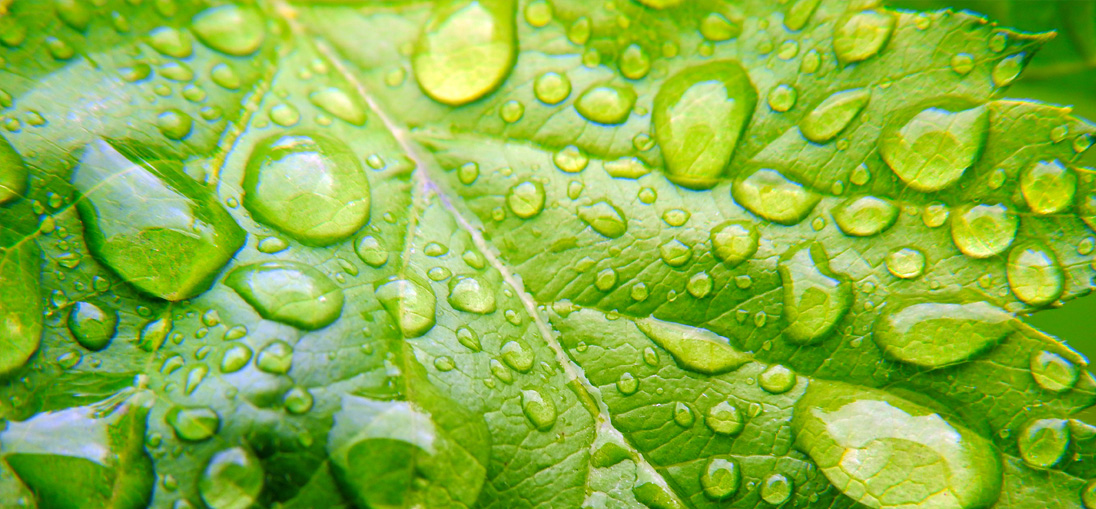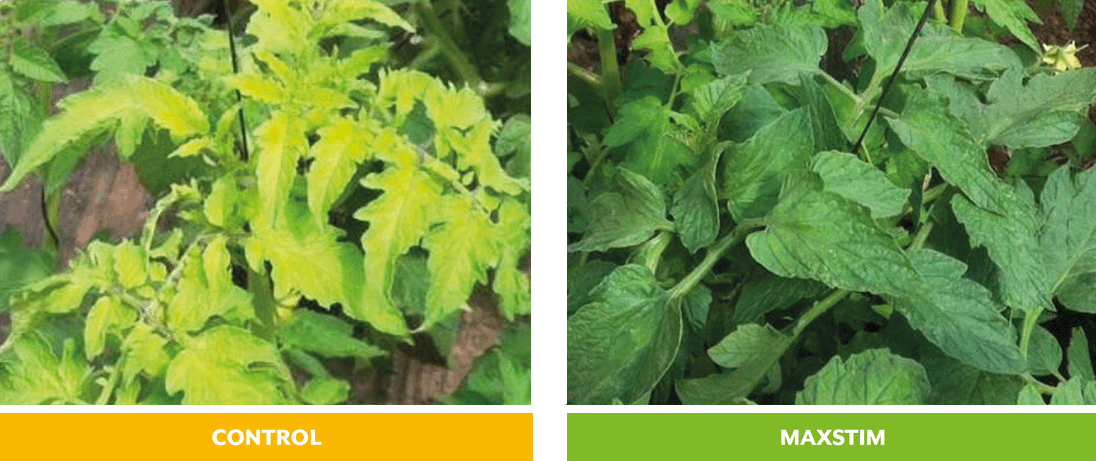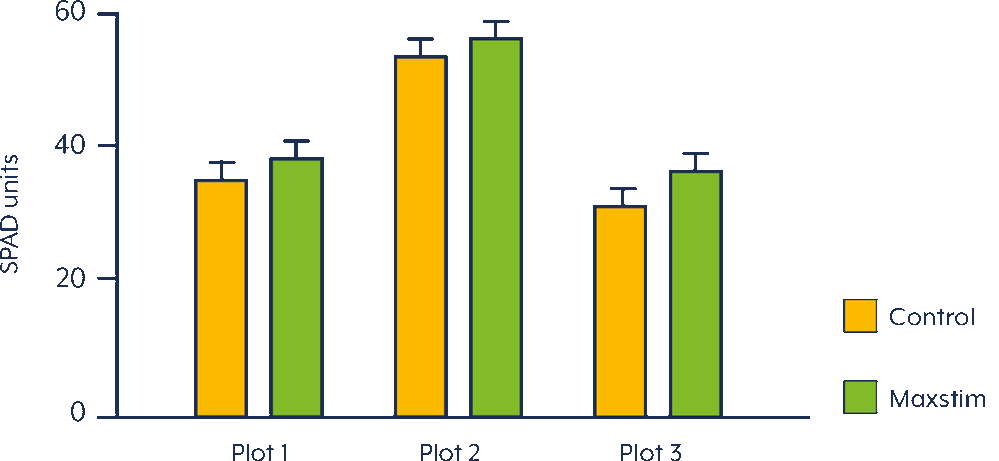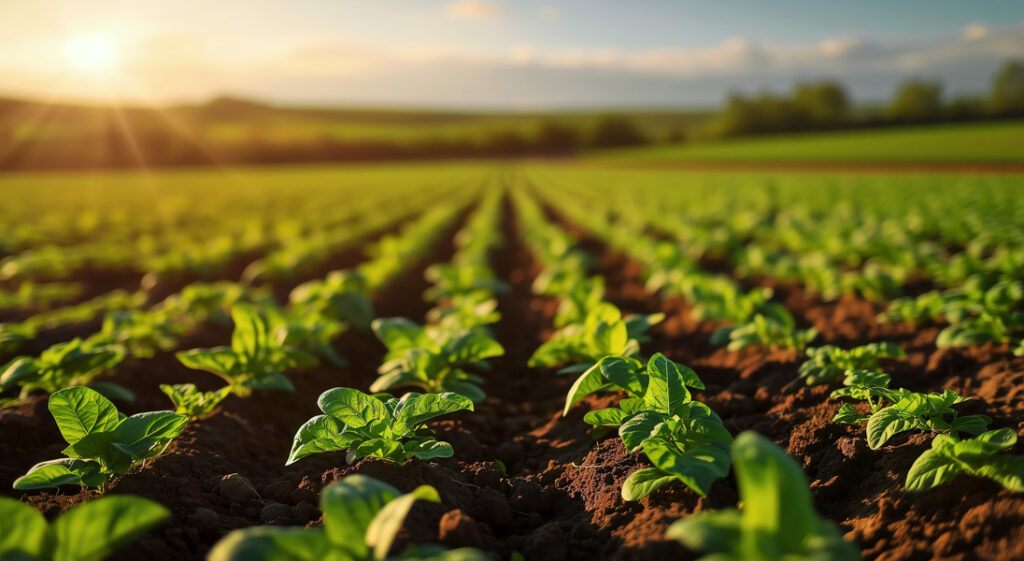Maxstim products help to ensure your crops reach their full potential
Insight

Photosynthesis is the basis of all life forms on Earth.
The leaves are the solar panels of a plant. They contain an abundance of chlorophyll, the pigment that gives plant leaves their green colour, which enables photosynthesis to occur. Its different structures allow these pigments to absorb different wavelengths of light, capturing this light energy and begin the photosynthetic process of turning it into chemical energy. Subsequently a plant can make its own food by converting C02 and H20 into glucose, which in turn becomes an excellent source of nutrition for us.
How Maxstim affects chlorophyll production
A plant becoming more noticeably green is one of the observable changes to a plant after the application of NPK. When this happens following a Maxstim application however, this is not due to the increased abundance of nitrogen.

Using innovative RNA sequencing techniques in the laboratory, our team have observed how Maxstim works to influence specific genes in the plant.
One trial demonstrated that Maxstim significantly affects 4181 genes when applied to a tomato plant.
Analysis revealed that some of the up regulated genes are an essential part of the pathway that increases chlorophyll production.
Raspberry SPAD levels
This graph shows significantly elevated leaf SPAD levels in all 3 plots where Maxstim was applied (P=0.0106).

Maxstim positively influences chlorophyll production, increasing the production of this vital pigment in plants, resulting in plants that are better at converting light energy into sugars and other key chemistries.
Call Tim or Tony to find out more about how you can help your crop reach its potential.
Tim Cannon
Email: tim.cannon@maxstim.com
Mobile: 07884 586191
Tony Kelly
Email: tony.kelly@maxstim.com
Mobile: 07974 435417

